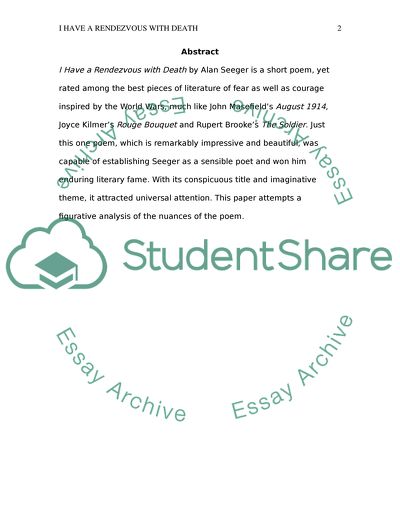Cite this document
(“I Have a Rendezvous with Death by Alan Seeger Essay”, n.d.)
Retrieved from https://studentshare.org/literature/1430088-i-have-a-rendezvous-with-death-by-alan-seeger-a
Retrieved from https://studentshare.org/literature/1430088-i-have-a-rendezvous-with-death-by-alan-seeger-a
(I Have a Rendezvous With Death by Alan Seeger Essay)
https://studentshare.org/literature/1430088-i-have-a-rendezvous-with-death-by-alan-seeger-a.
https://studentshare.org/literature/1430088-i-have-a-rendezvous-with-death-by-alan-seeger-a.
“I Have a Rendezvous With Death by Alan Seeger Essay”, n.d. https://studentshare.org/literature/1430088-i-have-a-rendezvous-with-death-by-alan-seeger-a.


